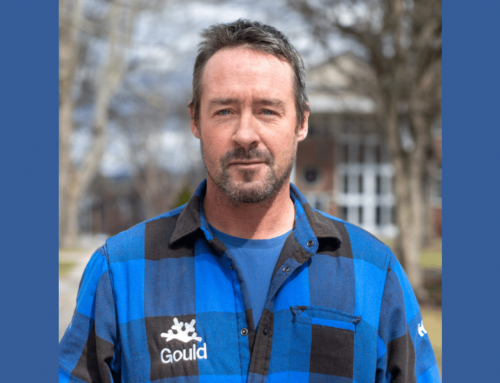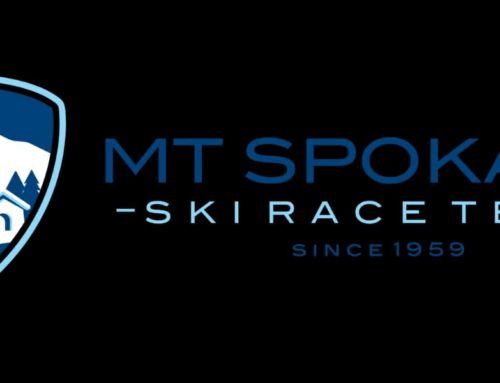With Zagreb coming up, US heads into 2021 with best start in years

Twenty-twenty is done and dusted. A year we will always remember, while we simultaneously try to forget. So, let’s shoot down the middle and go with being thankful for how it ended — with the best season start the U.S. team has had in half a dozen years. That’s not based just on the merits of its stars but on its depth, which is the ultimate measure of a federation. Between the men and women, 10 different skiers have amassed 21 top 10 finishes.
It’s easy to become accustomed to Mikaela Shiffrin winning when you consider she just picked up her 67th victory to tie Marcel Hirscher for third all-time behind Lindsey Vonn and Ingemar Stenmark. But in her own words, her GS win in Courchevel “felt like my first win” after all she’s gone through and is going through. It’s something of a rebirth that could provide an apt description for the current state of the U.S. team as it looks toward 2021.

We’ve already seen a rebirth of two World Junior Champions: Paula Moltzan (slalom, 2015) and Ryan Cochran-Siegle (downhill, combined, 2013). Moltzan, after a run through the NCAA circuit, found the World Cup podium in parallel in dramatic fashion, falling just shy of victory. RCS, whose knee injuries were so severe it kept him out of action for the better part of two years, fought, step by step, to his first downhill podium in Val Gardena then to a dominant win in the Bormio super G a week later. And his seventh-place downhill finish the following day might have been the best ski theater of the season. Tommy Ford defied the odds of a nearly idle preparation period to ski his way to fourth in the GS standings boosted by a second-place finish in Italy. For Breezy Johnson, three is finally the magic number. Not the three consecutive injuries in the three years between 2017 and 2019, but the back-to-back third-place downhill finishes in Val D’Isere.

It’s been stellar at the pointy end of the results, but there’s pressure just below, as well, with Ted Ligety, Travis Ganong, Bryce Bennett, Jared Goldberg and River Radamus reminding us of the old adage: Why buy the whole seat when all you need is the edge? It’s the same story with the women, though not without some heartache. Jackie Wiles and Alice McKennis Duran were showing podium-level skiing before getting tied up in an alarmingly loose slip skirt in the Val D’Isere downhill races. Their seasons are ostensibly done. The drama and intimidation that come with such crashes made Keely Cashman’s attacks from the back all the more impressive with two top-20 results punctuated by a 10th in the super G on Day 3.
But let’s talk slalom. Two big races are coming up in Zagreb. If you’ve been following the news, you know the area just sustained a 6.4-magnitude earthquake, which has devastated some areas in—but mostly south of—the city. COVID, no snow, too much snow, and now earthquakes — it is all too numbing. Alas, the races will go on, and they are some of the best additions to World Cup tour in modern history. The idea, like all good ideas, started on the back of a cocktail napkin.

Its genesis came the season following the height of Croatian skiing when Janica Kostelic had just won four medals—three gold, one silver—at the 2002 Salt Lake Olympics. She was an instant legend, but with no home race to showcase the star, so in November of 2002, the Croatian coach, manager, head of PR, etc., Vedran Pavlek, was lobbing the idea of a Zagreb slalom to few Slovenian coaches in the Sheraton hotel in Summit County. By 2005, it was on the calendar boasting the largest purse in women’s skiing. By 2008 it had permanent spot on the men’s calendar and challenging Kitzbuehel for the largest slalom purse. From its inception, the Snow Queen and Snow King—a moniker honoring Janica and Ivica Kostelic—has been one of the best shows in skiing, complete with a motorcade escort from the city of Zagreb to the summit of the Crveni Spust course.

The 2021 women’s edition will honor the tradition of showmanship. It was always going to be a showdown between the best slalom skier of all time, Shiffrin, and rising rival Petra Vhlova. Since Mikaela’s first Snow Queen victory in 2013, she has won all those she has finished including a couple with margins north of 1.5 seconds. All, with one exception. Last year, Vlhova beat her squarely with a Mikaela-like margin. But that rendition is now incomplete after Michelle Gisin (SUI) beat them both last weekend, becoming the first non-Slovak or American slalom winner in 29 contests. Both Shiffrin and Vlhova looked unlike themselves at times, getting tripped up by some tough course sets and tricky snow. Gisin wasn’t perfect either, so it’s fair to assume she’s not done disrupting the duo along with Katharina Liensberger (AUT) who finished second behind Gisin. In fact, if you combine the Austrian’s times over the first three races, she’s the fastest of the group: 0.18 seconds ahead of Vlhova and 0.5 seconds ahead of Shiffrin.
The depth chart for the U.S. team looks as good as it has in years. If you didn’t see Nina O’Brien’s full-send second run last week, go find it. It’s a lesson in determination. She fought her way to a personal-best ninth place. Paula Moltzan, also has top-10 speed, though she’s suffered a few miscues that she’ll need to wipe from the memory card. Europa Cup skier Katie Hensien also qualified in what was just her seventh World Cup start, making the U.S. look like a slalom TEAM again.
It’s a far muddier affair to project the heir of the men’s throne. Yet, every slalom skier knows, if they’re not on their game by now, they could be royally screwed. The Snow King cup is the first of seven slaloms this month. After January, it’s too late to play catchup. Dominant forces of last season, such as Henrik Kristoffersen, Clement Noel and Daniel Yule, have been inconsistent in the first two races. The opener, on the flat and relatively soft conditions in Alta Badia, didn’t give much long-range forecasting. The following slalom in Madonna usually does, and if it showed anything, it’s that when pushed to the point of spitting mad, Kristoffersen still has the speed to win all the way from 12th place in the first run. But the layout in Zagreb, very long with a very long flat, will require two good runs, maybe even something extraordinary, from the Norwegian to hold off the flat masters. Those who have shone in that scenario are 6’6” Ramon Zenhaeusern, Sabastian Foss-Solevaag and Alex Vinatzer. Historically speaking, Clement Noel should top that list, but he’s off to a rocky start.

The same could be said for the U.S. men’s slalom team. They’ve had trouble either staying on their feet and/or finding their flow in the opening two slaloms. But they’re young and battling from high start numbers and an abrupt start to the season. Unlike their European counterparts, they did not get any Europa Cup starts leading into the World Cup, thus coming in a bit cold. It was compounded in that opening-race conditions offered few opportunities for high numbers. But Zagreb has been historically welcoming to high numbers with low-number speed. Luke Winters has shown he has the speed, and in the brief glimpses we got of Ben Ritchie, a qualifying time is surely in reach. Jett Seymour has shown impressive poise and athleticism in his first two World Cup starts, but he’ll have to dramatically defy the odds to make the flip. What was once a young man’s discipline is now a mission of patience and perseverance. The average age of World Cup slalom teams (based on those who score) ranges from 26 to 31 years old. The U.S. men average just under 22 years. The challenge, of course, is to be patient, but not ski patient.
Hmmm. Sounds like a New Year’s resolution. Cheers to 2021.
UPDATE: It’s 41 degrees and raining in Zagreb. Salting has commenced. Not a great sign for high numbers, at least for the women.






















